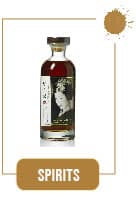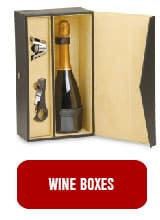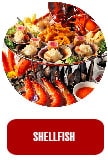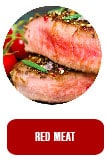No products
Catalog
- 1907
- 1918
- 1924
- 1925
- 1929
- 1931
- 1933
- 1934
- 1937
- 1938
- 1939
- 1940
- 1941
- 1942
- 1943
- 1944
- 1945
- 1946
- 1947
- 1948
- 1949
- 1950
- 1951
- 1952
- 1953
- 1954
- 1955
- 1956
- 1957
- 1958
- 1959
- 1960
- 1961
- 1962
- 1963
- 1964
- 1965
- 1966
- 1967
- 1968
- 1969
- 1970
- 1971
- 1972
- 1973
- 1974
- 1975
- 1976
- 1977
- 1978
- 1979
- 1980
- 1981
- 1982
- 1983
- 1984
- 1985
- 1986
- 1987
- 1988
- 1989
- 1990
- 1991
- 1992
- 1993
- 1994
- 1995
- 1996
- 1997
- 1998
- 1999
- 2000
- 2001
- 2002
- 2003
- 2004
- 2005
- 2006
- 2007
- 2008
- 2009
- 2010
- 2011
- 2012
- 2013
- 2014
- 2015
- 2016
- 2017
- 2018
- 2019
- 2020
Bordeaux
Red wine, with minimal amount of rosé, accounts for 88% of production.
The vineyards lie around the confluence of the Dordogne and Garonne rivers with the Gironde Estuary. Those vineyards lying to the west of the Garonne and Gironde are deemed to be wines of the Left Bank, those to the east, Right Bank.
The left bank: Saint-Estèphe, Pauillac,...
Red wine, with minimal amount of rosé, accounts for 88% of production.
The vineyards lie around the confluence of the Dordogne and Garonne rivers with the Gironde Estuary. Those vineyards lying to the west of the Garonne and Gironde are deemed to be wines of the Left Bank, those to the east, Right Bank.
The left bank: Saint-Estèphe, Pauillac, Saint-Julien, Margaux, Graves, Sauternes, Haut-Médoc.
The right bank : Saint-Emilion, Pomerol.
Subcategories
-
Saint-Emilion
Saint-Emilion is one of the largest wine producing regions in Bordeaux with 5,565 hectares under vine, producing more wine than Listrac, Moulis, St Estèphe, Pauillac, St Julien and Margaux combined.
Merlot and Cabernet Franc are the dominant grapes that make St. Emilion wine.
Saint-Emilion wines are generous, warm and full-bodied with lovely crimson color. As they mature, they acquire a special, very agreeable and generous bouquet reminiscent of white pepper, red-fruit jam, spices and coffee. Getting older, they acquire a rich and silky roundness, they have been described as "the burgundies of the Bordeaux area".
The appellation is also surrounded by four satellite appellations, which enjoy a family similarity but not the complexity of the best wines.
-
Pauillac
Pauillac is a wine growing commune and AOC within Haut-Médoc in Bordeaux, centred on the small town of Pauillac.
The wines of Pauillac are often considered the quintessence of Bordeaux wines and includes 3 of the 5 premier cru châteaux of Bordeaux: Latour, Lafite Rothschild and Mouton Rothschild.
Each have their own unique characteristics: Lafite Rothschild produces the region’s most aromatically complex and subtly-flavoured wine, while Mouton Rothschild produces a decadently rich, fleshy and exotic wine.
Powerful in their youth, the present aromas of red fruit or flowers (blackcurrant, rapberry, violets, roses, irises), which, in time melt into a delicate bouquet.
-
Margaux
It is the largest commune in the Médoc, encompassing the communes of Cantenac, Soussans, Arsac and Labaude, in addition to Margaux itself.
Vineyards located in Cantenac and Margaux make up the core of the appelation with the best vineyard sites being located on well-drained slopes, whose lighter soils give Margaux its deft touch and silky perfumes.
Wines from the Margaux appellation display a lovely ruby color, a lot of finesse and a characteristic bouquet. They are generous but not overpowering, enliven the stomach without affecting the senses and leave the breath pure and the mouth fresh.
They present an exceptional palette and an infinity of perfumes wht fruity overnotes. The possess elegant body, and a subtle and consistent structure. Their delicacy, their softness and their refined fruity aromas have dubbed them "the most feminine wines in the Médoc" which is probably why, like our helpmeets, they remain gracious for so long.
The two best wines of the Margaux region remain Chateau Margaux and Chateau Palmer .
-
Sauternes
Sauternes is a French sweet wine from the Sauternais region of the Graves section in Bordeaux.
Sauternes is made from Sémillon, Sauvignon blanc, and Muscadelle grapes that have been affected by Botrytis cinerea, also known as noble rot.
The appellation consists of five communes: Barsac, Preignac, Bommes, Fargues and Sauternes itself. Barsac is also an appellation in its own right.
The great "liquoreux" wines can be tasted and appreciated, on their own, as an aperitif or just for the sake of pleasur. At the same time, contrary to conventional opinion, sweeet white wines, especially the Sauternes and Barsac, can be drunk throughout a meal.
They go well with all sorts of foods: foie gras, fine-fleshed fish, butter or cream-based sauces, poultry or other cooked white meats, veined cheeses and certain desserts (not too sweet), and even with chocolate.
-
Saint-Julien
St Julien is the smallest of the Médoc communes. This commune, located at the heart of the Haut-Médoc, is separated from Cussac to the south by the Beychevelle marshes.
Wines with the Saint-Julien appellation are outstanding for their beautiful color, their body, great richness of aromatic savors and above all for their characteristics bouquet, suave, harmonious and of exquise finesse.
Chateau Léoville Las Cases produces the best wine of St Julien, and in any reassessment of the 1855 Classification it could be elevated to First Growth status. At its very finest it combines Margaux’s elegance and refinement with Pauillac’s power and substance.
-
Saint-Estèphe
St Estèphe is the northernmost of the most important communes of the Médoc.
Of all Médoc wines, those of Saint-Estèphe undoubtedly exhibit the most pronouces distinctiveness: a robust framework which does not exclude a certain finesse, an ample tannic structure which blends harmoniously with an aromatic characterized by touches of red fruit and spice.
The best châteaux in the south of the commune have the deepest soil and the thickest gravel. Cos d'Estournel has an exceptional terroir with its vineyards being located on a south-facing ridge of gravel with excellent drainage.
-
Graves & pessac
The name is derived from ‘gravel’ and the best soils are gravel-rich, mixed with sand and occasionally clay.
Even if it is larger in areas than the Médoc, it produces only half the amount of wine.
The best wines were first classified in 1953 with this classification confirmed in 1959.
Red wines: produced mainly from Cabernet Sauvignon with Merlot, the red "Pessac-Léognan", are highly expressive. They are opulent, remarkably structured, with great finesse. They accompany every kind of food with elegance and class. Aged for the most part in oak, capable of long cellaring -the supreme indication of top quality wine -, they deserve to be laid down and in due time drunk with respect.
White wines: The Pessac-Léognan wines, made principally from Sauvignon and Sémillion, are without any doubt the best known dry white wines in Bordeaux. They deserve this renown not just because of the richness of their aromatic palette, but also for their great aptitude for ageing.
Aged in oak, they may be appreciated in their youth, but retain astonishing frehness and vivacity after some 10 or even 20 years ageing.
-
Haut Médoc
The legal division between the Médoc and the Haut-Médoc dates from 1935.
The present surface area of vines producing wines entitled to the "Haut-Médoc" appellation is about 4'700 hectares for an average production of 250'000 hectoliters.
The wines of Haut-Médoc appellation are brillant and lively. Harmoniously balanced, generous but not overpowering they develop with time a remarkable bouquet. Depending upon where they come from, they will be more or less deeply coloured, more or less robust, but they all have that special "Médoc" character which makes them appreciated throughout the whole world.
-
Pomerol
With only 800 hectares under vine, Pomerol is the smallest of all the major Bordeaux wine producing appellations.
It is home to many tiny domaines, which produce little more than 1,000 cases per year.
Pomerol can be a surprise for the unaccustomed taster because, in addition to the richness of a Burgundy, it exhibits the finesse of a Médoc and the generosity of a Saint-Emilion. It needs to age, to grow up, and then, having come of age or having become an adult, it can reveal all the splendor of its talent and excite most of our senses: sight, by the brillance, the velvety feeling and the density of its robe; smell, by the exquisite and subtle perfumes of little red fruits, truffes and violets; taste, allied to touch, when it unveils the silkiness of its body, its roundness and its "flesh" on the palate.
Pomerol is the perfect match for pratically any kind of food, specially foie gras (semi-cooked, cooked, or in salt), red meat (roast beef en croute), game animals (lièvre sauve royale), fish cooked in red wine (lamprey), mushrooms (ceps, truffes à la serviette), cheese (almost all of them).
-
Lalande-de-Pomerol
Lalande-de-Pomerol is a satelite of Pomerol, its wines are stylistically very similar to Pomerol, even if sometimes lacking the finesse of its neighbour.
Like every great wine, the young Lalande-de-Pomerol wines need to be aerated and settled before tasting.
To taste them when they have reached their full breadth and plenitude, they need to be laid down (some ten years or so). At that time, noble and charmer Lalande-de-Pomerol wines disclose all their harmony, their balance and their complexity.
-
Montagne-Saint-Emilion
Montagne-Saint-Emilion is the largest 'satellite' title of the Saint-Emilion appellation in the 'right bank' Libournais sub-region of Bordeaux.
-
Cérons
At the present time, vineyards in this area cover about 1'000 hectares divided as follows: 445 hectares of red wines and 555 hectares of white wines.
White wines: sweet and soft, the Cérons wines present certain similarities to Barsac wines when the grapes they are made from are picked by successive sortings, once they have been attacked by "noble rot."
Wines with "Cérons" appellation always display a special body, which is extremely attractivee and present a highly developped bouquet. Complex, refined, full and fruity, these wines are still ignored by consumers.
-
Canon-fronsac
Situated between the windings of the rivers Isle, Dordogne and Saye, where windmills one beat their sails, the Fronsac region is a charming, smiling countryside. Next door to Libourne, the region's 18 communes form the canton of Fronsac.
The wines of Canon-Fronsac are essentielly wines from the Côtes. They are colored with a brillant, very sustained vermilion or ruby. As they age, they sometimes take on topaz tints, the sign of great limestone terroir. On the nose, they are powerful and elegant, developping aromas of red fruit to which may be added the fragrance of pepper, spices, sometimes even truffes. On the palate, they are fleshy, flat and soft.
Depending of their origins, they may be drunk yound and will be appreciated with grills, breast of duck, or venison stew. But as wines for cellaring, they are well-balanced with good backbone and their tannins develop over time becoming velvety and exhaling suave perfumes. Then, they are marvelous match for roast or preserved meats and fowl.
-
Moulis
Moulis-en-Medoc, in Bordeaux's Medoc district, gives its name to red wines produced mostly from Cabernet Sauvignon and Merlot.
-

-

-

-

-

Clos Fourtet 2009
2009 Clos Fourtet, Saint-Emilion Grand Cru, France
246,45 CHF 259,45 CHF -5%Reduced price! -

-

-

Château Franc Mayne 1994
1 OWC of 12 bottles of Château Franc Mayne 1994
41,35 CHF 45,95 CHF -10%Reduced price! -

-

-

-

100 % in stock
All of our products are avalaible on stock
Quick delivery
Your order will be shipped in 48 hours in a packaging provided for this purpose
Free delivery
Free shipment fees for orders over 1000 CHF (in Switzerland)
Free pickup in Geneva
In order to avoid shipping fees, your order can be picked up directly in our cellars or shop in Geneva
Your fidelity rewarded
2 % off






































